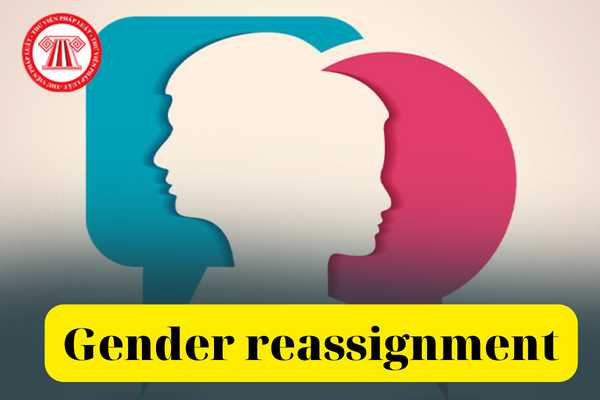What are differences between gender reassignment and gender redefinition by the Draft Law on Gender reassignment in Vietnam?
What is Gender reassignment?
Gender reassignment is a conceptual phrase used to refer to people who desire medical intervention to achieve their gender reassignment. According to Clause 3, Article 2 of the Draft Law on Gender reassignment, medical intervention for gender reassignment is:
"Article 2. Interpretation of terms
According to the Draft Law on Gender reassignment, the below terms means:
...
3. 3. Medical intervention for gender reassignment means the use by a person of genital hormones and/or thoracic surgery and/or genital surgery with the desire to convert part or all of his or her biological identity to another gender in accordance with his or her gender identity."
Thus, Clause 1 and Clause 2 of Article 2 of the Draft Law on Gender reassignment on the proposed transgender people and transgender people are:
"Article 2. Interpretation of terms
According to the Draft Law on Gender reassignment, the below terms means:
1. A proposed transgender people is a person whose biological gender has been completed, finds himself/herself identified with a different gender from the existing biological gender, and requests a competent agency to recognize him/her as a transgender people.
2. A transgender people means a person who proposes a gender reassignment recognized by a competent agency as a gender reassignment person in accordance with this Law."
Currently, according to Article 37 of the Civil Code 2015 on the gender reassignment in Vietnam as follows:
Article 37. Sex reassignment
The sex reassignment shall comply with regulations of law. Each surged transgender has the right and obligation to apply for change of civil status affairs as prescribed in law on civil status affairs and has the personal rights in conformity with the transformed gender as prescribed in this Code and relevant laws.
Thus, surged transgender has the right and obligation to apply for change of civil status affairs as prescribed in law on civil status affairs and has the personal rights in conformity with the transformed gender as prescribed in current laws.
What is gender redefinition?
Gender redefinition refers to people who are experiencing issues about the gender of such person is subject to a congenital defect or has not yet been accurately formed. They need to Re-determine gender identity in order to go back and live up to their biological gender.
According to Article 36 of the Civil Code 2015 on Right to re-determine gender identity as follow:
"Article 36. Right to re-determine gender identity
1. An individual has the right to re-determine his/her gender identity.
The re-determination of the gender identity of a person is implemented where the gender of such person is subject to a congenital defect or has not yet been accurately formed and requires medical intervention in order to identify clearly the gender.
2. The re-determination of the gender identity of a person shall comply with regulations of law.
3. Each individual undergone re-determination of gender identity has the right and obligation to apply for change of civil status affairs as prescribed in law on civil status affairs and has the personal rights in conformity with the re-determined gender identity as prescribed in this Code and relevant laws.
Principles to re-determine gender identity
Pursuant to Article 3 of the Decree 88/2008/ND-CP , the principles to re-determine gender identity are as follows:
1. Ensuring that every person can live true to his/her gender.
2. Conducting sex reassignment on the principle of voluntariness, objectivity, honesty and scientificity, and taking responsibility before law for sex reassignment.
3. Keeping secret information relating to sex-reassigned persons, except for cases in which there are documents of competent state agencies requesting the supply of dossiers in service of examination, inspection, investigation, prosecution and adjudication activities related to sex reassignment.
Differences between gender reassignment and gender redefinition
Subjects
The nature of gender reassignment and gender redefinition is different. Gender redefinition is returning the gender of such person is subject to a congenital defect or has not yet been accurately formed or the gene differentiating the testes. Gender reassignment is the form of helping to satisfy the need to become another sex of the person who wants to be transgendered. Thus, first difference is subjects of application. Gender reassignment applies to people who have completed 100% sex, have no gender defects, have not been correctly defined or have testicular differentiation genes. The subjects of gender redefinition are in particular those with gender defects, not yet correctly defined sexes or testicular differentiation gene
Purposes
The purpose of a transgender people is to live up to their gender needs. For example, their perfect gender is male, but they themselves always consider their gender female with a wish to live up to the gender. Therefore, they decided to conduct sex reassignment
Currently, the purpose of sex reassignment has taken a turn for the worse...
The purpose of gender redefinition is to redefine the gender-born disability, specifically the genital disability, so they just want to be able to perfect everything so that they can return to their actual biological gender.
Thus, gender reassignment and gender redefinition are two completely different concepts. The above information are that we provide and send you on the difference between gender reassignment and gender redefinition.
See the detailed Draft Law on Gender Reassignment here.
LawNet
